Sony 8FC-59W
The 8FC-59W, also known as FM-AM Solid State Digimatic, is a flip clock radio manufactured by the Sony Corporation, Tokyo, Japan. It has a mechanical clock mechanism powered by a mains AC motor, which uses the 50 Hz mains cycle for timing. It is also an alarm clock, where the clock mechanism automatically starts the radio at the set programmed time. The radio has a transistor count of eight, and I spotted 2SC403, 2SC633, and 2SB383 transistors. It has a power consumption of 5-watts, which I suppose would be considered too much in this high-energy-efficiency era we live in, but this was the Rolls-Royce of clock radios in its time.
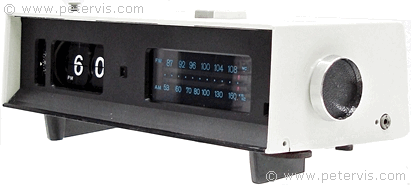

In this image, I have removed the front clear plastic, which is curved and tends to reflect everything.

Review

As a huge fan of Michael J. Fox and those wonderful "Back to the Future" films, I just love that starting sequence where they show an old style flip clock, because it reminded me of my own youth and having a similar one bought at a jumble sale. Therefore, I decided to go back to the future to see if I could find one. There are usually many of these for sale on eBay, and I managed to get this Sony 8FC-59W, which is one of the earliest ones they made. I managed to get mine at a bargain price of five pounds! "Great Scott!" you might say. You might be thinking that it was cheap, but it was in a bad state when I received it. This model is a golden oldie, and therefore a very iconic design. These units are well past their useful life period today, and if you manage to get one, the main thing to check for is the AC motor, which the clock mechanism relies upon. This motor is continuously turning, and eventually it reaches the end of its service life and stops. I suppose nothing is forever, however, unlike people, the good thing about technology is that you can always bring things back to life.
This model also has an AM/FM radio, and I thought that the sound was very clear and smooth. This is probably because of the Onkyo manufactured speaker, which points to the base making the sound come from underneath the unit. However, the audio output circuit has a pair of push-pull transistors, and a transformer coupled output. The power output is 850 mW through an 8 Ω 9.2 cm loudspeaker. It is a very high quality design, which they used in many other audio products of the time.
Great Scott!
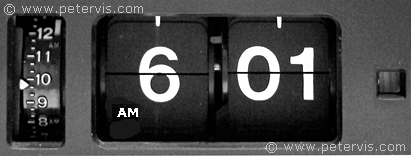
Amazingly, this split-flap clock mechanism required lubricating more than once a year and they provided a manual showing the points to lubricate using special oil known as "LUNA 40". However many people would have forgotten, and consequently today many units will have a jammed mechanism, or a motor that no longer rotates. The front of this Digimatic unit has a small square window, and if you look through it, you should see a set of red stripes moving. If you see no movement, then the motor is not turning, and your Digimatic will require inspection by a qualified engineer.
My unit had many problems; the lights did not illuminate, and the motor was completely dead, hence I had to take it apart to get to the faulty components. However, in the process, I managed to learn how a flip clock mechanism works, and managed to get some great images. Once my unit was restored, I showed it to my friend, "The Doc" and he said, "Great Scott! I used to have one of these back in 1968!" In the end, I decided to give it to him because it meant more to him than me.
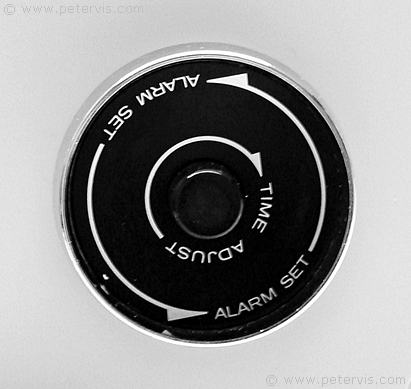
Turning the centre knob clockwise, moves the time forward, and the flaps will quickly flip over, forwarding the time. It sounds like the pages of a book flipping over fast.
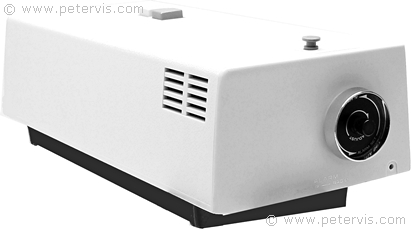
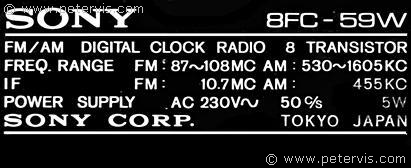
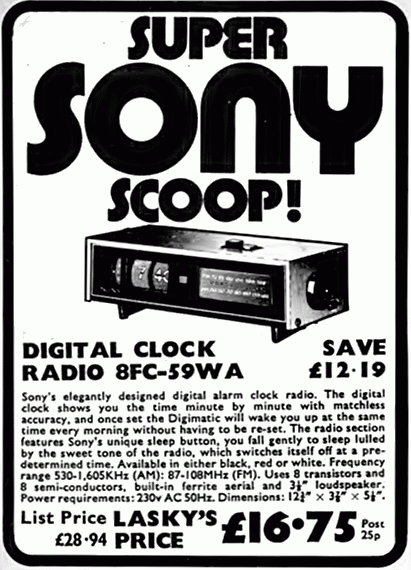
Here is a 1971 ad showing the Sony 8FC-59WA for sale. At that time, Lasky's price was £16.75, and additional 25 pence postage.
This Article Continues...
Sony 8FC-59WSony 8FC-59W Radio inside Look
Sony 8FC-59W Flip Clock inside Look
Flip Clock AC Motor
Flip Clock Mechanism
Split Flap Display
Circuit Diagram
Clock Assembly
